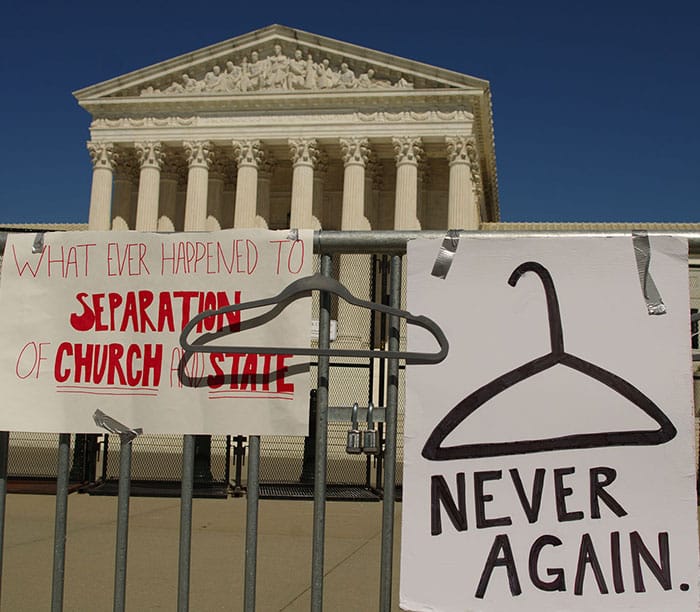Between 1600 and 1900, abortion was a common practice in North America. Many indigenous groups developed the ability to induce abortions prior to the foundation of the United States.1 The legality of abortion during the colonial era varied from colony to colony and was a reflection of the mindset of the European nation in charge of that particular colony.1 For instance, in a British colony, if an abortion was carried out before quickening, it was permitted. Quickening is when a mother can feel the fetus moving during pregnancy for the first time.5 Abortions were routinely carried out in French colonies despite the fact that they were forbidden. Last but not least, abortion was prohibited in the colonies of Spain and Portugal. Abortion was considered socially unacceptable from 1776 until the middle of the 1800s, but most states did not have abortion laws at this time.1
Slavery was an additional aspect of abortion during that time in American history. Slave women had different access to abortions than free women in the early years of the republic. Slaves were bound by the laws of their masters, and the master forbade their slaves from having abortions.3 Since these offspring “belonged” to the slave owner, the owner wanted as many children as possible to be born from their slaves. This position continued throughout the period of slavery in America.3
Physicians led the first anti-abortion movement in America with the intention of establishing a precedent for regulating the practice of medicine. The American Medical Association (AMA) in its infancy, became interested in the abortion industry.2 The AMA wanted to be recognized as a leader of the medical community, and non-physicians who offered abortion services were a clear target to prop themselves up. Abortion services had previously been seen as a women’s job, and a majority of providers were midwives who relied on techniques that had been handed down through generations. This included catheter abortions, the use of herbal contraceptives and pessaries, and a minor surgical procedure called dilation and curettage (D&C); which is still one of the most popular ways to end an early pregnancy today.2
With a letter-writing campaign aimed at state legislators, the AMA pushed for the outlawing of abortion in 1857. They argued that life begins at conception rather than quickening because this was the general consensus among physicians at the time. This effort was successful, and between 1860 and 1880, at least 40 anti-abortion legislation were put into effect.3 Even with this being the case, abortions occurred discreetly into the 20th century despite it being illegal.2
With the end of World War II, women were pressured to stay at home and have children and in doing so reaffirmed gender roles in America. The movement’s opposition to abortion included efforts to manipulate and limit women to traditional childbearing roles with the banning of abortion and birth control due to its perception as being a threat to male control.2 This coincidentally occurred during the proliferation of the women’s rights movement, which promoted a pro-choice view for women and in a sense independence.2 As a result of this transition in the 1940s and 1950s, more doctors were charged for performing abortions, and this forced the procedures into high-risk settings with non-traditional practices. The Guttmacher Institute estimates that between 1950 and 1960, there were up to 1.2 million illegal abortions carried out in the United States annually.7 In 1965, illicit abortions were linked to 17% of recorded deaths that were connected to pregnancy and childbirth.7
The perspective of society and abortion shifted in favor of more liberal abortion regulations as a result of the rubella outbreak from 1963–1965. The Centers for Disease Control and Prevention estimate that 12.5 million people were infected.4 Pregnant women who contract rubella run the risk of having babies with severe birth problems like blindness, deafness, irregular heartbeats, and severe intellectual disability.4 Despite these troubling outcomes, safe and legal abortions were still only easily accessible to those who could afford them and less so to minorities, those of lower socioeconomic status, and independent women.4
Women who could afford abortions took their cases to court to demand access to hospital abortions, while those who could not provide medical documentation demonstrating that continuing the pregnancy would risk their lives or their physical/mental health.2 These instances sparked a flurry of Roe v. Wade preparatory abortion reform legislation in state legislatures. Legal abortions were already accessible in 17 states by the time Roe v. Wade was ruled in 1973. However, taking the abortion topic to the Supreme Court and securing abortion rights for all Americans sparked a backlash from organized anti-abortion groups.2 Despite the fact that abortion was made legal in 1970, many women were still compelled to have illegal abortions because of the 1977 Hyde Amendment’s economic restrictions and the general lack of access to providers in their location.6
Even though the United States Constitution provided the campaign for reproductive rights with its legal foundation, state constitutions have occasionally proven to be trustworthy sources of robust protection for reproductive choice.6 State constitutions have the power to be interpreted independently of the federal constitution. Women living in states who have proclaimed distinct state constitutional protection for choice can turn to their state courts in the fight to safeguard their rights, regardless of how much or how little federal constitutional protection supports or reduces the right to an abortion.6 Modern-day examples of this include individuals seeking abortion care in states where the state constitution protects their rights to do so if they live in different states where such safeguards are not in place.
References
- https://pubmed.ncbi.nlm.nih.gov/10297561/
- https://magazine.jhsph.edu/2022/brief-history-abortion-us
- https://www.ourbodiesourselves.org/health-info/u-s-abortion-history/
- https://www.cnn.com/2016/08/09/health/rubella-abortion-zika/index.html
- https://my.clevelandclinic.org/health/symptoms/22829-quickening-in-pregnancy
- https://www.aclu.org/other/access-denied-origins-hyde-amendment-and-other-restrictions-public-funding-abortion
- https://www.guttmacher.org/gpr/2003/03/lessons-roe-will-past-be-prologue

